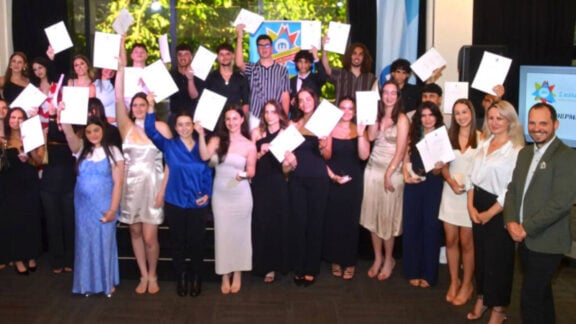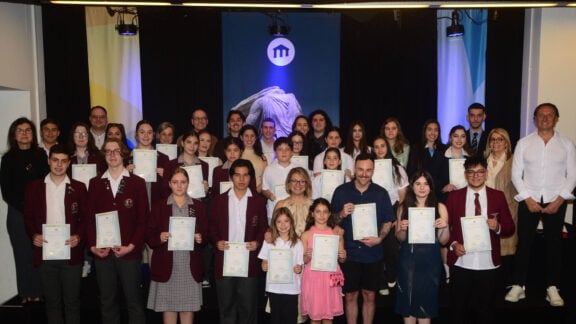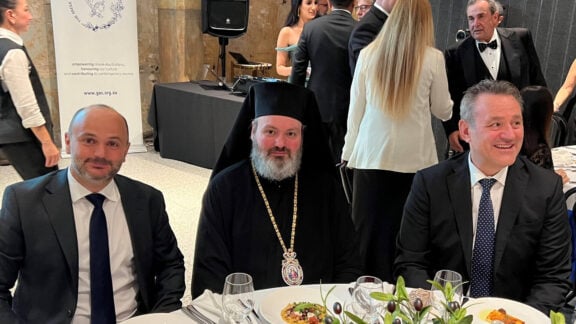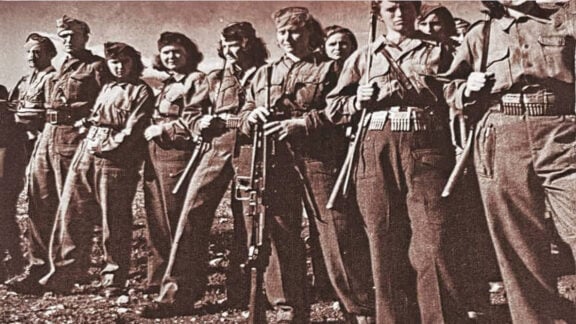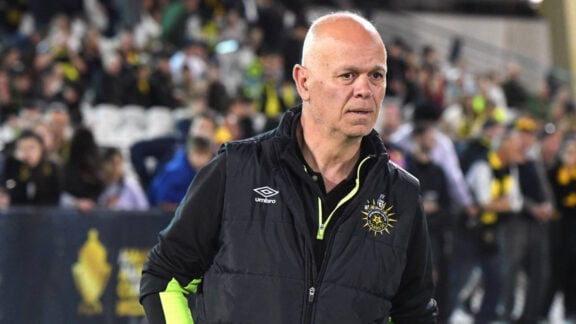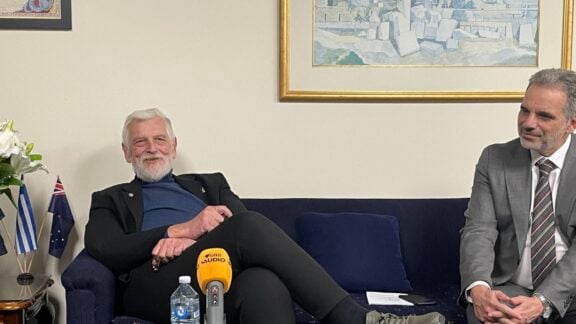Missolonghi is a name and a place that excites anyone interested in the history of modern Greece. It will be forever linked to the movement of philhellenes who flocked to Greece in support of its fight for independence from Ottoman rule. Lord Byron, the British philhellene who came to the town and would die there during the war, is forever connected to this beautiful town on the coast of the Ionian Sea.
Missolonghi of course is famous in itself for its part in the Greek Revolution. Its citizens were one of the first to rise against Ottoman rule in Western Greece, joining the uprising and securing their town in May 1821 under the leadership of local notables like Athanasios Razikotsikas, Panos Papaloukas and Christos Kapsalis. They were soon joined by the klepht chieftain Dimitrios Makris and later Alexandros Mavrokordatos, one of the overall leaders of the revolution. The town’s strategic importance lay in its location, with access to both the Peloponnese and the Ionian Sea. The town’s defenders would hold out against two Ottoman sieges, finally succumbing to the Ottoman forces in April 1826 after a year-long siege. The defenders and residents attempted withdrawal from the town was followed by a massacre, very few surviving. Lord Byron himself died at Missolonghi in 1824 before the fall of the town. For the bravery of its citizens the town was granted the honorary title of Hiera Polis or Sacred City, a unique honour in Greece.

As you arrive in the town no doubt the first thing that strikes you are the remains of the defensive walls with their cannons mounted on the parapets and the great entrance gate from the days of the siege of the city. Beyond these defences is the beautiful Garden of Heroes in which stand many memorials dedicated to the various heroes of the revolution, including individual philhellenes and contingents such as those who came from Poland, Italy and Switzerland – along with many to the Greek fighters and civilians who took part in the defence of the town in 1821-26. The central memorial is that to Lord Byron.

My good friend Dr Spiridoula Demetriou had recommended that we visit the two principal museums to the Greek revolution and Lord Byron that are located within the town itself. The first is the History and Art Museum. This beautiful old renovated building stands on the main square of the town. Its many rooms and two floors contain many items of original memorabilia and reproductions telling the story of Missolonghi. While these are principally concerned with the revolution (including swords and muskets from the era as well as a great ornate processional canopy dedicated to the memory of the massacre of 1826), I was particularly impressed in viewing the museums portrait of the British philhellene and naval officer Frank Abney Hastings who died following an attempt to liberate the town in May 1828.

The Lord Byron and Philhellene Museum and International Research Centre is located on the outskirts of the town, about 500 metres from the harbour and near the coast. It is easily identified by the impressive Byron statue which stands near the building. Run by the local Byron Society, the new building is modelled on Byron’s last residence in the town which no longer exists. The museum is home to an impressive permanent exhibition entitled “Byron and Greece”, telling the story of Lord Byron and the revolution in a series of displays across a number of rooms on the first floor. The exhibition opened to the public in April last year on the bicentenary of his death.

The exhibition opens with a timeline of the key events of Byron’s life, followed by his role in the European philhellenic movement, his arrival and part in the revolution in Missolonghi and his death. A further section details Byron’s influence on the Romantic Movement, his identification with Greece, some of the key artefacts of Byron’s (such as his helmet, slippers and campaign bed) and subsequent commemorations of his life. Many of the original material on display – artworks, weapons and documents etc- have been sourced from many archives in Greece and the United Kingdom. A research centre is located on the second floor and has an extensive library with great views across the lagoon. I was particularly impressed by the collection of important documents on display. The museum hosts various cultural events throughout the year which are advertised on its website. This museum is a must for all interested in the topic.

But Missolonghi offers more to the visitor than a deeper appreciation of Lord Bryon, the philhellenes and the Greek revolution. Wandering around the central town, not far from the main square we came upon the Xenokrateion Archaeological Museum, an institution of the Greek Ministry of Culture. And what a find! The Museum is relatively new, having been inaugurated in 2021. It is housed in a beautifully renovated late 19th century neoclassical building which operated as the Municipal Girl’s School through the donation of Constantinos Xenocratis, a major benefactor from Sidirochori in Eastern Thrace. As you enter the Museum we were impressed by the grand staircase leading to the upper floors.
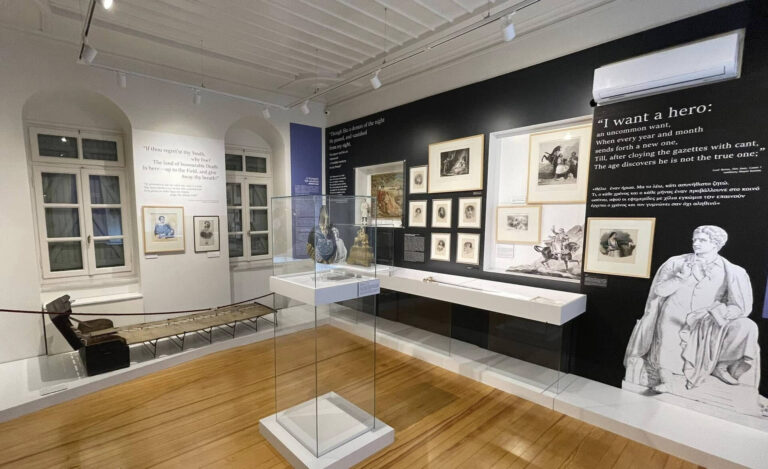
The Museum houses over 1,200 objects, arranged chronologically and by location, telling the story of the Aitoloakarnania region from prehistoric to late Roman times (from 100,000 BCE to the 3rd century CE). We read that many of the artefacts on display were discovered as a result of recent infrastructure works across the region, including excavations for new highways and bridges, such as the new Ionia-Odos highway – a reminder that when you dig in a place like Greece you need to be very careful, history beckons. It is so reassuring that modern Greece treasures its long history with examples like the creation of this new Museum and it’s amazing exhibits.
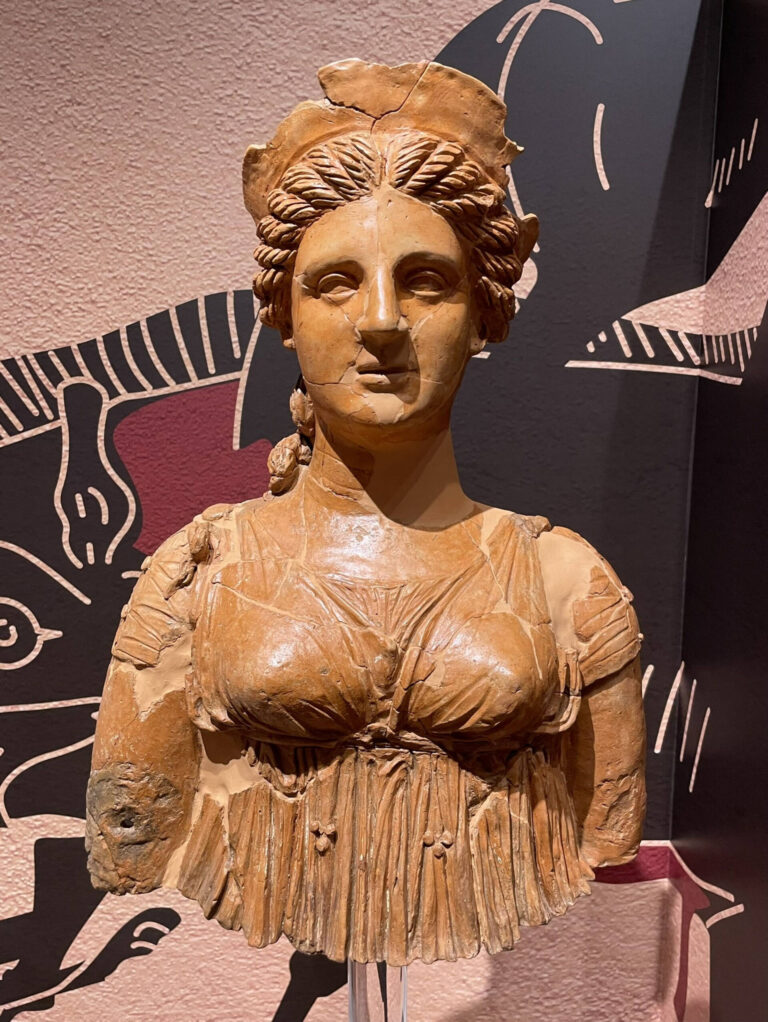
Amongst the usual archaeological displays this Museum includes striking figures with their original colours still evident, such as the waterspout framed as the head of a lion from a 550BCE Temple of Apollo in vivid colour. This reminds me of pre-Columbian era stonework from Latin America. We are also struck by an amazing almost life size 3rd century BCE clay figure of a female deity from the city of Calydon. And then there are items of everyday use like the Hellenistic era bronze grater.
The artefacts are displayed to tell the history of the many ancient and classical-era settlements of the region – such as Calydon (a major city in Ancient times, situated on the west bank of the Evinos river), Alikyrna (near modern day Hilia Spitia) and Pleuron (located in the mountains above the lagoon, this city is mentioned Homer as a city that supplied ships for the Trojan war) – from settlement, to the creation of wealth, access to rivers and the sea as well as to rivalries and war. The displays are state of the art, informative, bilingual and easy to follow, across the series of display rooms.

All of this is brought together in an amazing 10-minute video documentary presentation shown to visitors, entitled Acheloos, the lord of all rivers. This is a unique combination, marrying the geology and natural environment of the region with the settlement of its people, interpreting both mythological legend and archaeological and written evidence. I have never seen such a video synthesis. Truly unique.
Another stop on your visit to the city is the famous Salt Museum. Don’t be fooled by the title, this is a very interesting museum, featuring images and stories of the poor workers who worked in often terrible conditions to bring this essential ingredient from the sea to the table. Also on display are cannonballs from the war of independence retrieved from the sea.

Having enjoyed a full day touring we needed some relaxation. And what better place in the city than the Persephone Restaurant. On the advice of the History and Art Museum, we found one of the best eateries in Greece, situated just off the main city square. Tucked away down a side-street, here is this thriving and busy restaurant, its effusive owner darting between tables offering excellent food. We savoured the beef with lemon, pastitso, zucchini fritters and beetroot with feta salad, washed down with my favourite local beer Mamos.
But the best part of our stay here was that many of the other customers were in fact singers, part of a charity choir called Music Paths from Limassol Cyprus who were performing locally and decided on a meal at Persephone’s. Soon we were surrounded by the sound of singing and dancing, familiar rebetiko songs filling the restaurant. One of the unplanned joys of travel.

So when you are tasting some salt, thinking about Greece’s ancient history or reading about Lord Byron and the Philhellene’s, think of a stop in Missolonghi on your next trip to Greece to take in its amazing museums and hospitality. And more importantly if you are travelling in Western Greece – whether you are crossing the Trikoupis Bridge from Patras, having tasted the delights of Nafpaktos or are on your way to Lefkada or Ioannina – stop and take in what this beautiful little coastal town has to offer. Like me I’m sure you want regret it.

*Jim Claven OAM is a trained historian, freelance writer and published author who has researched and written about many of the links between Australia and Greece, including a series of articles published in Neos Kosmos on aspects of the Greek War of Independence. He has also written a number of books on the Hellenic link to Anzac as well as working as the Associate Producer of the documentary Anzac The Greek Chapter. He thanks Dr Spiridoula Demetriou, Natasha and Themi Rodikis and Rosa Florou of the Missolonghi Byron Society for their help during his visit to Missolonghi. He can be contacted via email – jimclaven@yahoo.com.au.

